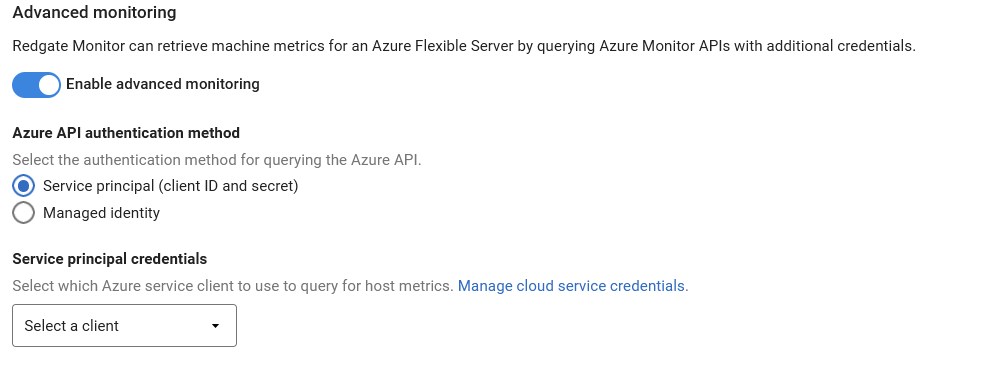Adding PostgreSQL on Azure Flexible Server
Published 28 October 2024
Additional configuration required
Make sure you have prepared PostgreSQL for monitoring before adding a PostgreSQL instance to Redgate Monitor.
This page explains how to add an Azure Flexible Server PostgreSQL to Redgate Monitor. To monitor Azure Flexible metrics via the Azure API see enabling host monitoring for Azure Flexible server.
For details of the metrics and alerts available for Azure Flexible PostgreSQL, please see: PostgreSQL on Azure Flexible metrics and alerts.
- Go to Configuration → Monitored servers → Add → PostgreSQL
- Select Azure Flexible Server as the environment
- In the Endpoint name field, enter the endpoint for the instance provided by Azure, this will typically end with ".*.postgres.database.azure.com". Please check the screenshot below to see where the endpoint name is (server name in this case)
- Enter the port in the Port field. This is typically the default of
5432for PostgreSQL. - For authentication, there are 3 options
- Password: Enter the username and password. You should use the Monitor user you have created when following the Preparing PostgreSQL for monitoring guide.
- Entra Service Principal: Can be used with a Base Monitor hosted outside of Azure. Requires an App registration.
- Entra Managed Identity: Requires Base Monitor hosted in Azure.
- Optionally, enter the "Login database" if you are not using the same database name as your username.
- You can select a group where the instance will be added, select "Uncategorized" if you don't want to put it in any particular group.
- For capturing machine metrics for your Azure Flexible PostgreSQL instance, you must switch on "Enable host monitoring" and provide authentication method.
- For information on how to set up host monitoring, see our dedicated documentation on enabling host monitoring for Azure Flexible server.
- For information on how to set up host monitoring, see our dedicated documentation on enabling host monitoring for Azure Flexible server.








